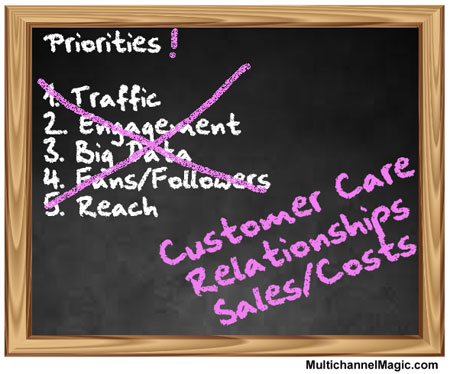
Very few buzzwords stimulate the strong feelings and controversy associated with growth hacking. Every company needs sustainable growth to be successful. The idea that you can “hack” growth is alluring to some and offensive to others. Growth hacking sounds a lot like “overnight success” to people working diligently to grow their company. They know that it takes years of preparation and hard work for most overnight successes to land in the spotlight.
Sean Ellis coined the term “growth hacker” in 2010. He defines a growth hacker as “a person whose true north is growth.” This simple definition is a perfect way to identify people with the skill set required for growing companies. In its purest form, having a growth hacker in your organization will keep it moving forward. The problem comes when growth hacking is manipulated to fit existing infrastructures or put a new spin on a broken strategy. Growth hacking shifts from strategic planning to magical thinking.
Sustainable growth comes when opportunities are matched with solid foundations. Growth hacking can be a solid strategy when it encompasses all departments. Opportunities are typically found on the marketing and sales side of the business. The foundation is built on the operational side. Lack of communication between marketing and operations is the biggest challenge found in most companies. A growth hacker has to be able to comfortably cross interdepartmental lines and resolve the communication issue.
Growth hacking, as a function of the marketing department, is limited to finding opportunities. It is ideal for a startup needing a quick entry into the market or an existing company needed to revitalize lagging sales. Using a growth hacker to find untapped marketing opportunities can be the catalyst that begins scalable growth for the startup or a turnaround for an established business. It may be what is needed at the time but it won’t create the sustainable growth that builds companies.
Creating sustainable growth strategy requires a leader that can work with a team to evaluate the needs throughout the organization and create a plan that exploits market weaknesses while building a strong infrastructure. That individual has to have analytical skills, creativity, and the ability to unite departments for common cause. Growth strategies are best planned without departmental baggage. Limiting the planning and execution to one department minimizes the potential and increases the probability that your growth hacking will deliver more hype than sales and profits.
When tasked to grow Ballard Designs, we first focused on the operational side of the business. There were issues in all of the departments but without a solid service foundation, any growth would be short lived. The process was simple. We reduced the order turnaround and improved interdepartmental communication. The plan was to get our operational house in order and then work on the marketing side to increase sales.
Cause and effect can surprise you. Sales started increasing as we worked to improve our service. Ballard Designs was a pureplay catalog business at the time. There were no changes to the marketing plan yet sales began to exceed projections. An analysis of the incoming orders found that people were reordering at a faster rate. We also found that costs were decreasing. We were receiving fewer incoming customer service calls and seeing increased productivity in our fulfillment center.
Delivering orders sooner had the positive side effect of increasing sales and profits. Building a strong service foundation created the infrastructure needed to support the two and three digit growth rates Ballard Designs achieved during my tenure as Chief Operating Officer. The one thing we did that made the difference was to create a team to grow the company. The team members came from every department in the company. Sustainable growth was a corporate strategy not a departmental goal. There was no room for excuses or blame because everyone was responsible. There was much cause for celebration because everyone benefited from our success.
If you are seeking sustainable company growth:
Start with the team – Create a team with members from every department to contribute to the growth strategy. Having the right team members is critical because success will be limited if any department doesn’t buy into the strategy. Team members need to be open minded, inclusive, and have a good understanding of how their individual departments work.
Choose a leader – Management by committee never works. The leader needs autonomy, overall knowledge of the company and market, and the ability to unite the departments. If you don’t have someone in-house, consider using a consultant to develop the talent in-house or hiring an outsider.
Identify trouble areas – What is limiting your growth? Every department leader knows internal areas that need improving. Initially, require them to limit suggestions to things within their individual departments. This improves interdepartmental cooperation by preventing extensive finger pointing.
Create a process for requesting change – Departmental activities affect other departments. Creating a process for team members to request changes in other departments reduces communication challenges and interdepartmental animosity.
Identify opportunities – Every department has opportunities to improve sales and reduce costs. Start with self-analysis and then move to receiving interdepartmental suggestions. Sometimes an outsider sees opportunities missed by insiders.
Create a strategy in stages – It is impossible to create a comprehensive long-term strategy that doesn’t need modification. Think globally and long-term but limit detailed specifics to shorter terms. You can expand as you learn what works best.
Be flexible – Companies in growth mode have surprises along the way. Include flexibility in your planning so you can adapt as the environment demands. Be careful about creating ownership because if it is too strong, change is impossible.
For information on how you can create an effective growth team, email Debra at dellis@wilsonellisconsulting.com.
 Facebook’s recent addition of a “Save” button gives a limited measure of control to users. The algorithm changes that rendered organic Facebook marketing ineffective may be offset with the ability to archive posts, links, places, and media. In theory, it is a good first step to creating a more user friendly experience. In reality, issues keep it from being effective at this time.
Facebook’s recent addition of a “Save” button gives a limited measure of control to users. The algorithm changes that rendered organic Facebook marketing ineffective may be offset with the ability to archive posts, links, places, and media. In theory, it is a good first step to creating a more user friendly experience. In reality, issues keep it from being effective at this time. 























